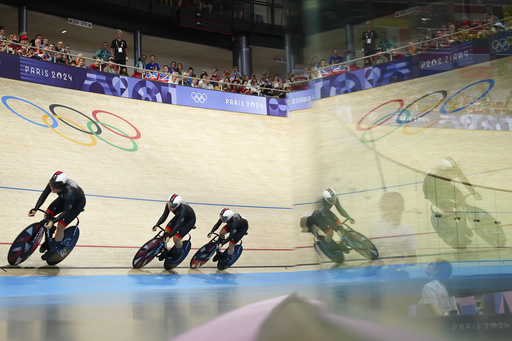Sam Welsford, a member of the Australian cycling team, expressed excitement at the record time set by his team at the Paris Olympics, anticipating the need to go even faster for the gold medal. Throughout the track cycling events at the Vélodrome National de Saint-Quentin-en-Yvelines, world records have been consistently broken, reflecting the high speeds achieved by athletes. Notably, the British and Dutch teams excelled in breaking records during the team sprints and pursuit events.
Factors contributing to the exceptional speed witnessed at the Olympic velodrome include its unique dimensions, smooth track surface made of Siberian pine, and meticulous maintenance procedures. The track’s design, with constant radius and steep banking in the corners, facilitates rapid cycling, creating a slingshot effect. Additionally, the velodrome’s temperature and humidity levels are carefully regulated to optimize performance.
Track cycling involves a high-stakes competition where technological advancements play a crucial role. The cost of bikes used in the Olympics can be exorbitant, with teams investing heavily in lightweight materials, aerodynamic designs, and collaborations with manufacturers to gain a competitive edge. For instance, bikes like the V-IZU TCM2, priced at around $138,000, showcase the extent of resources dedicated to equipment in pursuit of victory.
The heat inside the velodrome during the Paris Olympics has been intense, contributing to the rapid times clocked by cyclists. The warm air’s lower density reduces resistance, allowing athletes to achieve faster speeds. With a combination of favorable temperatures, advanced equipment, and aerodynamic innovations, cyclists have been consistently breaking records and pushing the boundaries of performance at the track events.


